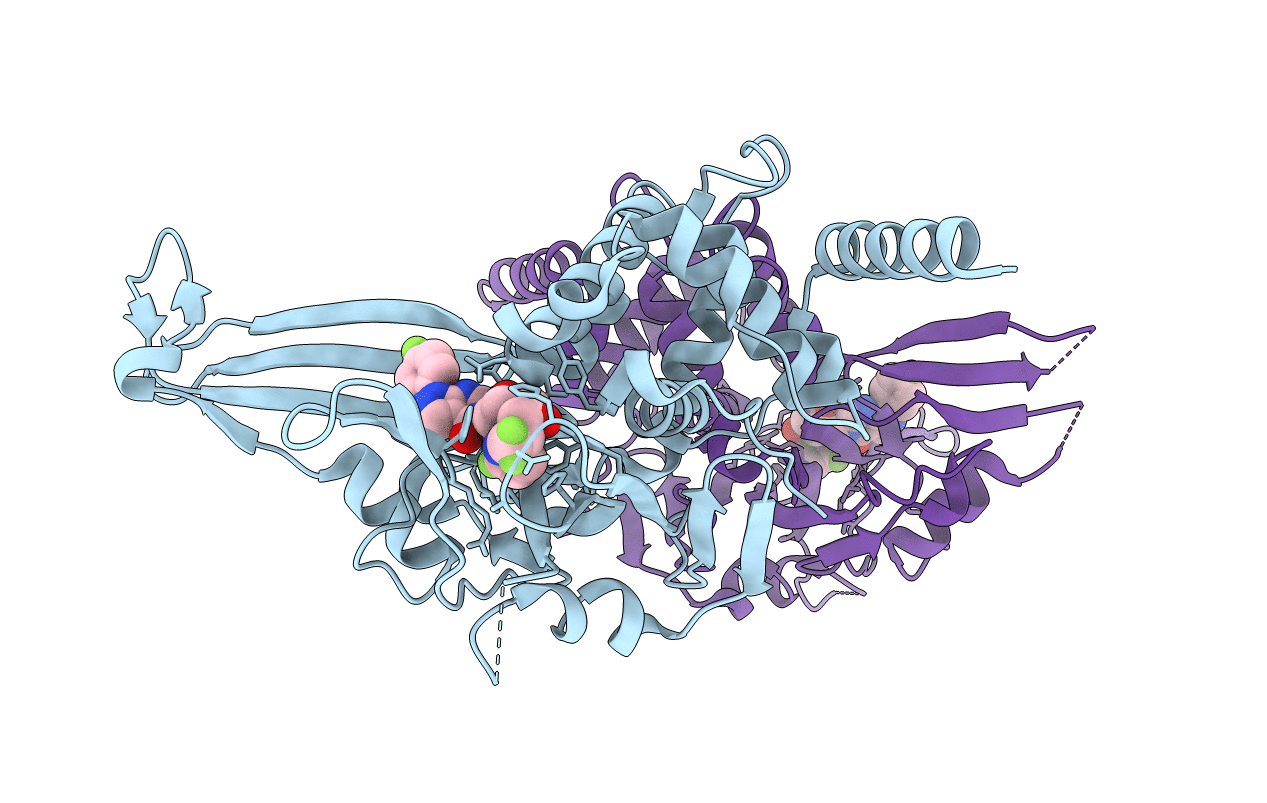
Deposition Date
2017-03-17
Release Date
2017-10-18
Last Version Date
2024-10-23
Entry Detail
PDB ID:
5NGE
Keywords:
Title:
Crystal structure of USP7 in complex with the non-covalent inhibitor, FT671
Biological Source:
Source Organism:
Homo sapiens (Taxon ID: 9606)
Host Organism:
Method Details:
Experimental Method:
Resolution:
2.35 Å
R-Value Free:
0.27
R-Value Work:
0.21
R-Value Observed:
0.21
Space Group:
P 1 21 1


